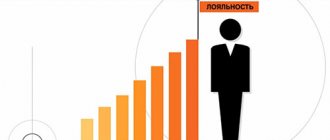Good health to the readers and subscribers of my diary. I want to share my experience of how I moved from chaos to an hourly daily routine. I took examples from the lives of successful people whose rhythm of life is scheduled minute by minute.
Previously, I worked for my grandmother. Served the allotted time from morning to evening and went home. I received a salary once a month. Grandmother always paid the same, regardless of the results of work. If necessary, I gave a magic kick to increase productivity. Now my grandmother is gone, I work on my own and for myself.
The poor results of my work forced me to analyze “Why I don’t have time to do anything and every day I run in one circle, like a squirrel in a wheel.”
Daily routine as the basis of a healthy lifestyle
What does it mean to lead a healthy lifestyle? A healthy lifestyle consists of several important components:
- proper nutrition;
- exercise stress;
- rational daily routine;
- hardening and strengthening the immune system;
- personal hygiene;
- maintaining mental hygiene (ability to cope with negative emotions);
- family planning and development of sexual culture;
- health promotion and preventive procedures.
Most modern people are susceptible to various diseases due to non-compliance with healthy lifestyle rules. This is why it is so important to maintain a daily routine for a healthy lifestyle.
“How ridiculous are the demands of people who smoke, drink, overeat, do not work and turn night into day that the doctor make them healthy, despite their unhealthy lifestyle,” - L.N. Tolstoy.
There are various technologies and channels for creating a healthy lifestyle. Among them:
- social: media, educational events in educational institutions and workplaces;
- infrastructural: regional and federal environmental control, preventive institutions;
- personal: standardization of everyday life, the individual’s value system.
Thanks to the above channels, improving the health of each individual person becomes a problem on a national scale. Various institutions are opened and funded that are ready to tell the population what it means to lead a healthy lifestyle: health centers, research centers, institutes for promoting a healthy lifestyle. It is here that the latest technologies for teaching a healthy lifestyle and the skills to maintain it are being developed.
They make a plan almost every minute
Business consultant and best-selling author Kevin Kruse surveyed more than 200 highly productive people. Among them are billionaires, Olympic athletes and single students.
He found that many of them divided their day into tiny units of time. While most people planned an hourly or half-hour schedule, these people had a more thorough schedule, scheduled minutely.
Olympic gymnast Shannon Miller told him, “To this day, I keep an appointment calendar where I plan almost every minute.”
Yes, it may seem too much for us, but such a detailed schedule sometimes really helps, especially when we have a lot of things on our shoulders that need to be solved today.
Forming the right daily routine
There is nothing more important for a healthy lifestyle than a good daily routine. It allows you to comply with all aspects of a healthy lifestyle and use your time rationally. A healthy lifestyle day plan might look like this.
1) 7:00 – rise and morning hygiene procedures
You should wake up in a good mood. Try to get out of bed every morning with a smile and a positive attitude for the day. After waking up, it is advisable to drink a glass of clean water at room temperature, this will “turn on” your body and speed up your metabolism.
Doctors advise brushing your teeth before your first meal so that bacteria accumulated in the oral cavity do not enter the gastrointestinal tract. Read about other expert recommendations in this article.
2) 7:30 – light exercise
Tones the body and energizes you for the whole day.
3) 8:00 – breakfast
Breakfast should be hearty and include proteins and complex carbohydrates. The ideal option would be scrambled eggs with a slice of whole grain bread. Read about proper nutrition in this article.
4) 9:00-10:00 – peak mental activity
It would be best to devote this time to activities related to intense brain work, memory and intelligence. It is during these hours that such tasks are performed more efficiently.
5) 12:00 – 14:00 – break for proper rest and lunch
It's time to refresh yourself and give your brain a break from hard work. Lunch should give you strength until dinner, so it should be no less hearty than breakfast. For example, you can bake a chicken breast, complement it with boiled brown rice and fresh vegetables. Such a diet will perfectly satiate and will have a beneficial effect on the digestive system.
After lunch, it is advisable to take a short walk or at least stretch a little to circulate the blood throughout the body. Especially if you have a sedentary job or study.
6) 14:00 – 16:00 – excellent time for routine work that does not require special strength
At this time, the body is still busy digesting the food it received for lunch. All efforts are directed towards this process, but not towards mental assault to solve difficult problems.
7) 16:00 – 18:00 – another chance to work hard
Ideal time for brain sketches. The food is digested, all systems are working as normal, the brain is ready to produce extraordinary ideas. To bring mental abilities to a peak state, they can be trained. Special webinars will help you concentrate and produce maximum results in a short time. It is effective to apply these exercises regularly to improve your mental abilities.
 18:00-19:00 – time to have dinner
18:00-19:00 – time to have dinner
Dinner should be light and consist of protein and fiber. For example, steamed fish with a side dish of boiled vegetables. You should go to sleep with a slight feeling of hunger so as not to overload your stomach.
9) 19:00-21:00 – time to practice
What does it mean to lead a healthy lifestyle? Don't forget about sports, of course.
A person who regularly plays sports endures life’s problems almost 3 times easier, he is 20% more proactive in work, creativity, and social life, he is more sociable, he is more self-confident and strives to achieve better results in any area of his activity.
For busy people, this is the ideal time to devote to sports. You should wait an hour and a half after dinner, take a walk in the fresh air or spend time with your family, and then go for a workout. It can take place both in the fitness center and on the street (if you are a fan of running, for example). Here are the basic rules for physical education.
10) 21:00-22:00 – time for evening hygiene procedures
You can take a relaxing bath with mineral salts and perform your own beauty rituals.
11) 22:00 is the best time to go to bed
Regenerative systems are launched in the body, metabolism slows down, and the body goes into a state of rest. Health promotion also occurs during sleep.
They do the same thing every morning
Successful people do the same things every morning. This way they start the day in a structured way. They learn specific behaviors that the body and mind remember. Mark Zuckerberg even goes so far as to wear the same T-shirt every day (of course, he has several). This way he doesn't waste time thinking about his outfit.
Praise the company without promoting yourself: five psychological interview tricks
From sea fish to sunflower oil: healthy products for office workers
Explore career opportunities: How to find your first job in a meaningful way
This fine-tuned routine may seem strange and inconvenient, but in fact it makes our everyday days much easier by making them organized. You can try this technique and decide if it really helps. Well, judging by the steadily growing finances of famous billionaires, this path is really effective.
Mobile assistants
Even modern technologies stand guard over teaching a healthy lifestyle. The following apps for a healthy lifestyle will tell us how to become a healthy person: “Fitness and proper nutrition”, “Pedometer”, “Time to drink water”, “Calorie calculator” . These healthy lifestyle programs will help you develop your own action plan to strengthen your body. With their help, you can create a rational menu for every day, count all the calories consumed so as not to overdo it, and also remind you when you need to drink the next glass of clean water to support all metabolic processes in the body.
Remember, just by following the correct daily routine for a healthy lifestyle, you will not only know what a healthy person looks like, but you will also become one. And a drawn up action plan for a healthy lifestyle will help you stay on the right path.
Successful people usually get up very early
For example, Apple CEO Tim Cook always sets his alarm for 3:45. Then he starts reading the emails. Getting up early doesn't bother him or other successful people. They love their jobs and can't wait to get back to work.
They get a boost of energy in the morning, for example, from a cold shower or from exercising. Twitter founder Jack Dorsey jogs at 5:30. Disney boss Robert Iger works out at the gym every morning. In fact, such a habit is useful not only from the point of view of success, it is good for health. Our body will thank you after a while. You will notice how much your metabolism, speed of food absorption and many other aspects will improve.
Communicate with pleasant colleagues: how to maintain a positive atmosphere at work
“I don’t need to have everything”: how a woman gave up the pursuit of success
Not always related to money: how to reward yourself without falling into wastefulness
They don't work during lunch
Working during your lunch break is a mistake. Successful people use free time to turn off or recharge their batteries. Bill Gates, for example, likes to play cards at noon, so he comes up with other thoughts in the process.
Warren Buffett spends lunch every day with a different person. Why? Because he's been auctioning off his lunch dates for years to the highest bidder. Proceeds go to charitable organizations, and volunteers who invest in this program receive buffet benefits because it gives interesting new acquaintances.
They create conditions for healthy sleep
Successful people place great importance on sleep. They know that sleep makes them quite productive. That's why they put away their laptop and mobile phone an hour before they go to bed. Media entrepreneur Arianna Huffington has banned all technology from the bedroom.
Joel Gascoigne, one of the inventors of the Buffer app, walks every evening. “It allows me to evaluate the day's work, think about more difficult tasks, gradually stop thinking about work and reach a state of fatigue,” he writes on his blog.
Tim Ferriss Method
Timothy Ferriss is a popular productivity guru. Recordings of his public speeches receive millions of views, and his books sell in equally huge numbers.
No wonder - who doesn’t want to “work 4 hours a week, without being stuck in the office from bell to bell, and at the same time live anywhere and get rich”? Ferriss's book of the same name reached number one on The New York Times and The Wall Street Journal bestseller lists.
His method is based on two pillars:
- Pareto's Law: 20% of effort produces 80% of the result, and the remaining 80% of effort produces only 20% of the result. This means focusing on the activities that really matter.
- Parkinson's Law: Work fills all the time allotted to it. This means that you need to devote exactly as much to a task as is necessary to complete it.
To get more done, you don't need to increase your working hours. On the contrary, reduce it, focus only on what is really important. Discard everything else, outsource or delegate.
The Ferriss approach is consistent with the 1-3-5 planning technique. Its essence is simple: one important task, three medium ones and five small ones are added to the to-do list. There are nine in total. They are a priori distributed according to urgency, which helps get rid of the feeling of rush.
Ferriss is an opponent of multitasking and information overload. When doing several things at the same time, attention becomes unfocused. As a result, productivity does not increase, but decreases. The same is true with the continuous absorption of information. Constantly checking email, instant messengers and social networks only creates a false sense of busyness, but does not bring you closer to your goal.
But stress, on the contrary, Ferriss considers our helpers.
Fear is an indicator. Fear is our friend. At times he shows what not to do, but more often he shows what should be done.
Tim Ferriss
It's worth noting that Tim Ferriss isn't the only one looking to be more productive by working less. Stever Robbins, author of the book “9 Steps to Working Less and Getting More Done,” suggests the “active days” method for this, when on a certain day you assign yourself a “controller” who will monitor your progress.
Conclusion
This method is suitable for you if you cannot follow a strict schedule and to-do lists do not work for you. Organize your day so that 20% of your time is spent on the most difficult and important tasks. Let the rest take its course. In other words, if you need to hold a business meeting, then you need to choose a day, time, duration and strictly follow the plan. The rest of the day can be devoted to any current work.
They remain productive after work
Of course, you should relax after work and not work until late at night. Successful people still make good use of their time. They engage in projects and interests that they promote, rather than just wasting time eating and watching a TV show.
When asked about the secret of his success, Elon Musk answers: “I read books.” It is said that as a teenager he read two volumes a day. He uses books to inspire and hone his character.
Musk revealed a list of his favorite books, from The Lord of the Rings to the biography of Benjamin Franklin.
Other actions may also help you progress. For example, learn a foreign language, play a musical instrument, draw or collect a collection. Do things that add value to your life.
Francesco Cirillo method
You may not be familiar with the name Francesco Cirillo, but you've probably heard of Pomodoro. Cirillo is the creator of this famous time management technique. At one time, Francesco had problems with his studies: the young man could not concentrate, he was distracted all the time. A simple kitchen timer in the shape of a tomato came to the rescue.
The essence of the Pomodoro method: periods of time allocated to work are “pomodoros.” One pomodoro = 30 minutes (25 minutes for work and 5 for rest). We start the timer and work with maximum efficiency and minimal distractions for 25 minutes. The signal sounds - it's time for a five-minute break. Then we start the timer again.
Thus, productivity is measured by the number of pomodoros completed per day. The bigger, the better.
In order not to spend 25 minutes coming up with something to do, you need to make a list of tasks in advance. In it you can also mark the number of whole “tomatoes” (a cross is placed next to the task) and distractions (an apostrophe is placed). This allows you to determine how long it took to complete a particular task and how difficult it was.
The Pomodoro method is accessible and flexible. If you want, keep a to-do list on paper and measure out 25-minute segments with a kitchen timer, or if you want, use special services and applications.
| Windows | OS X and iOS | Android |
| PomodoroApp | Pomodoro Time | Focus |
| Keep Focused | Tadam | Pomodoro Timer |
| Tomighty | Flat Tomato | Clockwork Tomato |
According to Cirillo, the optimal duration of a pomodoro is 20–35 minutes. But, having mastered the technique, you can experiment and change the intervals to suit yourself.
You can learn more about Francesco Cirillo’s method here.
Conclusion
At the beginning of the day, make a list of things to do and get them done, oh. If you get distracted within 25 minutes, put a ' symbol next to the task. If the time has expired, but the task has not yet been completed, put a + and dedicate the next “pomodoro” to it. During a five-minute break, completely switch from work to rest: walk, listen to music, drink coffee.
So, here are five basic time management systems with which you can organize your day. You can study them in more detail and become an apologist for one of the methods, or you can develop your own by combining various methods and techniques.
Limited time
The daily routine implies a clear plan, but often it indicates a certain, but very vague time for solving any tasks. In the modern world, success comes to people who know how to focus on a task and solve it quickly. Breaded, hours-long meetings, conferences, and brainstorming sessions, as a rule, lead nowhere. The age of technological progress has led to the fact that people are accustomed to focusing attention and quickly switching from task to task. Good leaders are aware of this feature and understand that if a task was not completed in the allotted time, then “extra minutes” will not change that. And this time is not measured “from pick-up to lunch”; it is not counted by the clock.
Winston Churchill: “Start your workday while still in bed”
Obviously, the position of the head of the government of Great Britain, as well as any other country, implies irregular working hours. But despite this, Winston Churchill managed to stick to his routine for many years.
Waking up at half past eight, he spent the whole morning lying in bed: eating breakfast, reading mail, looking through the latest press and dictating to his secretary. Around eleven, the minister got out of bed, washed, put himself in order and walked around the garden.
The three-course meal started at about an hour and lasted about the same. All family members and invited guests were present. Having enjoyed communication with his family, Churchill returned to work.
A mandatory item in the minister’s routine was a long daytime nap, lasting about an hour and a half. Dinner began at eight in the evening and, again, all relatives and friends were present. Afterwards, Churchill returned to his office and worked for several more hours.
If you constantly have to sacrifice family relationships for the sake of work or your job obligations for the sake of your family, try to resort to the advice of Mr. Churchill. Of course, if your position requires mandatory presence in the office, such a schedule is unlikely to suit you. But if we are talking about a flexible or free work schedule, then this schedule may turn out to be one of the best options for organizing active work.
They solve large problems first
Research has shown that people can only work with concentration for four or five hours before productivity declines. Therefore, it would be fatal to waste this valuable time on administrative tasks or answering countless emails.
That's why successful people start with tasks that require attention and execution. For example, write a text, perform calculations, develop strategies. Thus, they invest all their effectiveness in solving global problems, leaving small ones for the time when their concentration wanes.
Secret stash for a rainy day: why everyone needs it and how to create it
EU adds locusts to list of permitted food products
You can conduct online training: how a student can earn real money











